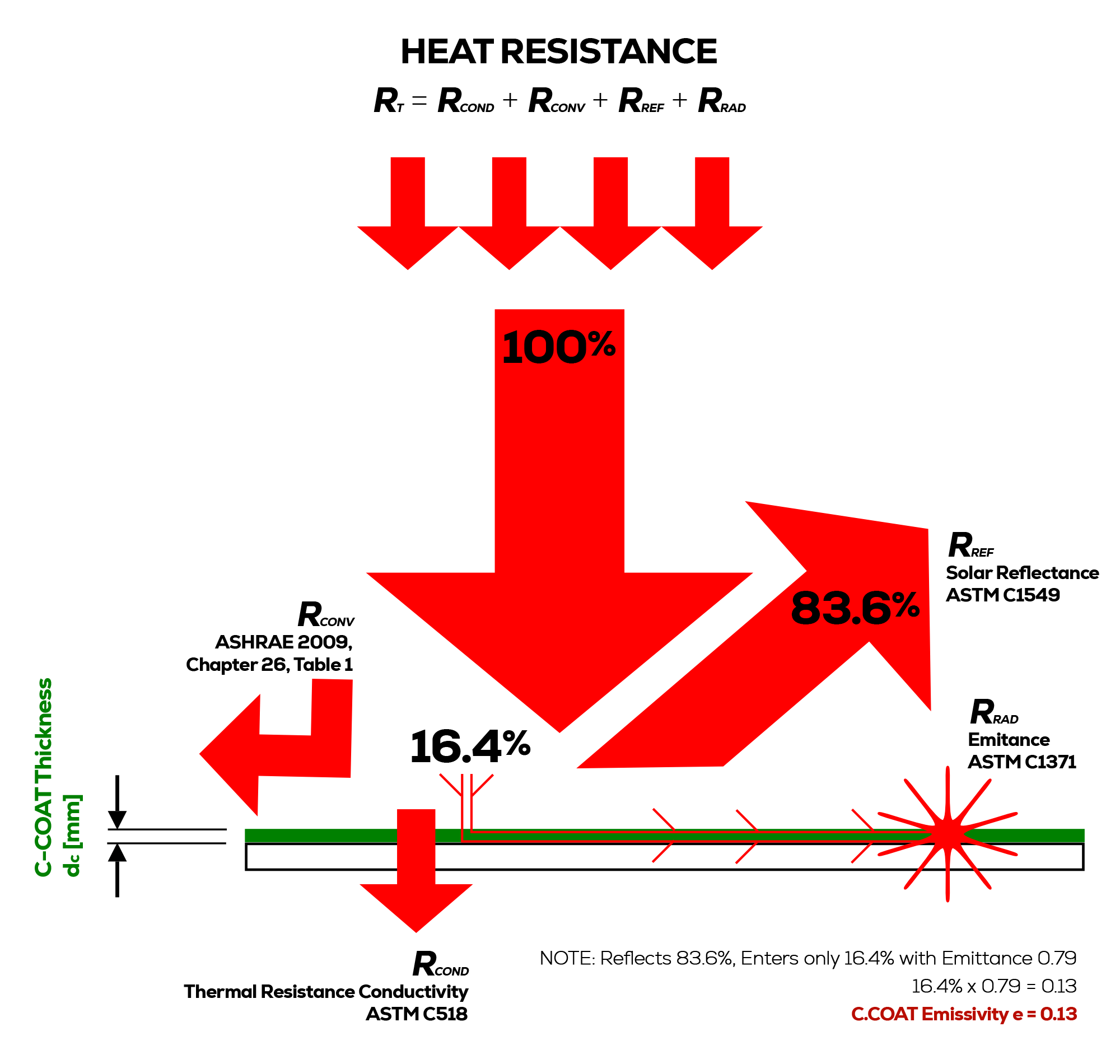Energy Savings in Buildings
Save up to 30% of energy budget
Applying 1.0 mm of C-Coat could help you save up to 30% of energy budget
C-Coat is unique, with 4-in-1 functionality:
THERMAL RADIANT BARRIER – WATER RESISTANT – ANTIRUST – SOUNDPROOF

- Heat flux is blocked to outside
- Walls stay cooler in hotter months
- Comfortable microclimate maintained
- Cost of air conditioning is reduced
- Apply to roof, floor, ceiling, interior walls or façade
- Protection against: condensation, frost, moisture, fungus, mould
- Blocks condensation and eliminates destructive corrosion processes
- Warming of balcony floor
- Prevents water penetration
- Protects against frost
- Isolation of seams
- Decrease in heat loss
- Prevents condensation
- Long life Heat insulation
- UV and sun radiation blocking
- Corrosion protection
- Insulates window slopes
- May be applied to hard-to-reach areas
- Seals edges and cracks
- Retains warmth in walls, floor and ceiling
- Reduces heat losses
- Protects against condensation and mould
- Easy to apply on any surface
- Easy to colour or paint
C-COAT INNOVATION
Due to absence of Internationally recognised TIC – Thermal Insulating Coatings performance evaluation methods and for a better understanding of this technology our C-COAT Team has derived a series of patents to assist industry and users.
NOTE: There are number of various methods where TIC materials, such as C-COAT are used, which are application and heat source dependant and we’ll describe and publish more details soon

C-Coat Ip Method “outside Heat Source” Application
This method is addressing the practical determination of the equivalent thermal conductivity of nano-ceramic insulating coatings and it’s comparison with traditional insulation materials.
However, the above method related to “Outside Heat Source” application begins with calculation of thermal resistance’s for conduction, convection, radiation and reflection.
Then the equivalent thermal conductivity is calculated out of the total thermal resistance, approximating that traditional formula for regular thermal conductivity is estimated as coating thickness divided by the total thermal resistance.
That formula gives the equivalent thermal conductivity of the nano-ceramic insulating coating that is compared with a traditional insulation material of known thermal conductivity.
It is assumed that corresponding thermal resistance’s are equivalent and from there the equivalent thickness of a traditional insulating material is calculated.
The need for introducing this method comes from the fact that there are practical applications where nano-ceramic coatings show all four modes of thermal resistance that cannot always be neglected as for traditional insulation materials. Using this method we are able to claim that:
0.5 [mm] thickness of C-COAT has the equivalent* value of R2.5
(in this “Outside Heat Source” application).
NOTE: This calculation and tests confirmed claim is very close to our practical results measured up to R3.0.
NOTE: For the Academic paper, formulas and more details please contact our C-COAT Team in Australia.
NOTE: For “Inside Heat Source” application the results are different and we’ll publish results and formulas soon
NOTE: C-COAT has a unique feature when applied over hot metal substrate providing a STS – “safe to touch” surface.
Test results comparing C-Coat with classic Insulation for metal roofs.
We made three sample boxes, with a plain uninsulated roof used as the benchmark, then a roof with classic insulation material (130mm glass wool R3.0) and a roof coated with C-Coat (one layer of about 0.5mm and the second sample with two layers of about 1.2-1.5mm thick)
Summary 1:
The C-Coat product at a thickness of 0.5mm performed marginally better than the classic R3.0 130mm insulation across the tests.
Summary 2:
The C-Coat product at a thickness of 1.5mm performed significantly better than the classic R3.0 130mm insulation across the tests.
With a vision to make the world a better place, we supply revenue positive systems to reduce energy usage & protect the environment.


